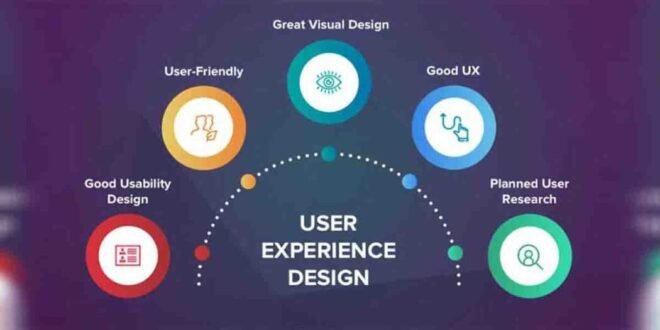Understanding User-Centric Design
Graphic User-centric design represents a fundamental shift in the approach to creating products or services, placing the end-users at the core of the design process. Unlike traditional methods where designers dictate solutions, this approach involves deeply understanding users’ needs, behaviors, and preferences.
Define User-Centric Design
User-centric design prioritizes empathy, necessitating designers to step into the shoes of the users to comprehend their motivations, challenges, and goals. It’s not just about aesthetics; it’s about functionality, usability, and user satisfaction.
Differentials from Traditional Approaches
Compared to conventional design methods that focus primarily on aesthetics or technical specifications, user-centric design revolves around iterative cycles of research, prototyping, testing, and refining to meet user expectations.
Emphasis on Empathy, Research, and Iteration
The essence of user-centric design lies in empathizing with users, conducting thorough research to understand their needs, and embracing an iterative approach. This method allows for continuous improvement based on user feedback.
Graphic Design in User-Centricity
Graphic design forms a crucial aspect of user-centricity, influencing how users perceive and interact with a product or service visually.
Visual Communication and User Connection
Visual elements communicate ideas, emotions, and functionalities. They evoke certain emotions and perceptions, forming a crucial part of the user experience.
Balancing Aesthetics and Functionality
While aesthetics play a significant role, it’s essential to ensure that visual elements contribute to the functionality and usability of the design. A visually appealing design that compromises usability might result in a poor user experience.
UI/UX Essentials
UI (User Interface) and UX (User Experience) are often used interchangeably but represent distinct aspects of design.
UI vs. UX: Understanding the Difference
UI focuses on the design of the interface, encompassing the layout, visual elements, and interactive elements. UX, on the other hand, covers the overall experience a user has with a product or service, including how it makes them feel and the ease of use.
Key Principles in UI/UX Design
Principles like simplicity, consistency, accessibility, and intuitiveness are paramount in creating designs that are not only visually appealing but also user-friendly and efficient.
Impact of User Psychology
Understanding user psychology is crucial. Elements like color choice, typography, and layout can significantly impact user perception and behavior.
Research and Insights Gathering
Research serves as the foundation of user-centric design, helping designers gain valuable insights into user behaviors and preferences.
Importance of User Research-Graphic
User research methods like interviews, surveys, and usability testing provide invaluable data that guides design decisions. It helps in understanding user needs, pain points, and expectations.
Data Analysis for Informed Decisions
Analyzing data collected from research allows designers to draw meaningful conclusions and make informed design choices. It helps in identifying patterns and trends that can shape the design direction.
Iterative Design Process
User-centric design thrives on an iterative process that involves continuous refinement based on user feedback.
The Iterative Nature of Design
The iterative approach involves creating prototypes, testing them with users, gathering feedback, and refining the design based on these insights. This cyclical process leads to gradual improvements.

Feedback Loops and Continuous Improvement
Feedback loops are essential in ensuring that the design evolves to meet user needs effectively. They allow for adjustments and enhancements based on real user experiences.
Integration of Agile Methodologies
Adopting agile methodologies enables teams to respond to change and adapt quickly. It emphasizes collaboration, flexibility, and constant improvement.
Frequently Asked Question (FAQs)
1. What is User-Centric Design, and why is it important?
User-Centric Design is an approach that prioritizes the needs, preferences, and behaviors of users throughout the design process. It aims to create products, services, or experiences that are intuitive, efficient, and enjoyable for the end-users. It’s essential because it ensures that what’s being designed meets the actual needs of the people who will use it, enhancing usability, satisfaction, and overall success.
2. How does User-Centric Design differ from other design approaches?
User-Centric Design stands apart by focusing explicitly on the end-users. Unlike traditional design approaches that might prioritize aesthetics, technical specifications, or the designer’s preferences, user-centric design revolves around understanding and addressing user needs through iterative research, prototyping, and testing.
3. What are the key components of User-Centric Design?
The key components include:
- User Research: Understanding user needs, behaviors, and preferences through methods like interviews, surveys, and usability testing.
- Iterative Process: Continuously refining designs based on user feedback and testing.
- UI/UX Principles: Incorporating principles like simplicity, consistency, and accessibility for a user-friendly experience.
- Technological Adaptability: Adapting designs to evolving technologies and devices while keeping user needs at the forefront.
4. How does User-Centric Design benefit businesses?
User-Centric Design offers several advantages for businesses, including:
- Improved User Satisfaction: Products or services designed with users in mind tend to be more intuitive and enjoyable, leading to higher user satisfaction.
- Increased Engagement and Loyalty: When users find a product easy and pleasant to use, they’re more likely to engage with it regularly and remain loyal to the brand.
- Reduced Costs: Designing with users in mind reduces the chances of rework or costly redesigns later in the process.
5. What role does empathy play in User-Centric Design?
Empathy is crucial in user-centric design as it allows designers to step into the users’ shoes, understand their perspectives, frustrations, and motivations. It helps in creating designs that truly cater to user needs rather than assumptions or preconceived notions Graphic.
6. How can I integrate User-Centric Design into my design process?
To integrate user-centric design:
- Start with Research: Conduct user research to understand your audience of Graphic.
- Create Personas: Develop user personas to represent different user groups of Graphic.
- Prototype and Test: Build prototypes and test them with actual users to gather feedback of Graphic.
- Iterate and Refine: Use the feedback to refine and improve the design iteratively.
7. What are some common challenges in implementing user-centric design?
Some challenges include:
- Balancing Stakeholder Needs: Aligning user needs with business goals and stakeholder expectations.
- Limited Resources: Constraints in terms of time, budget, or access to users for research and testing.
- Over-reliance on Data: Relying solely on data without considering qualitative insights or the human aspect of design.
8. How do evolving technologies impact User-Centric Design?
Evolving technologies such as AI, AR/VR, and voice interfaces present both opportunities and challenges. They provide new ways to enhance user experiences but also require designers to adapt and ensure these technologies align with user needs and preferences.
9. What ethical considerations are important in User-Centric Design?
Ethical considerations involve ensuring user privacy, transparency in design decisions, avoiding manipulative design practices, and ensuring inclusivity and accessibility for all users.
10. How does User-Centric Design contribute to innovation?
User-Centric Design fosters innovation by continuously involving users in the design process and responding to their needs. It encourages thinking outside the box to create solutions that genuinely address user pain points and deliver unique and impactful experiences.




